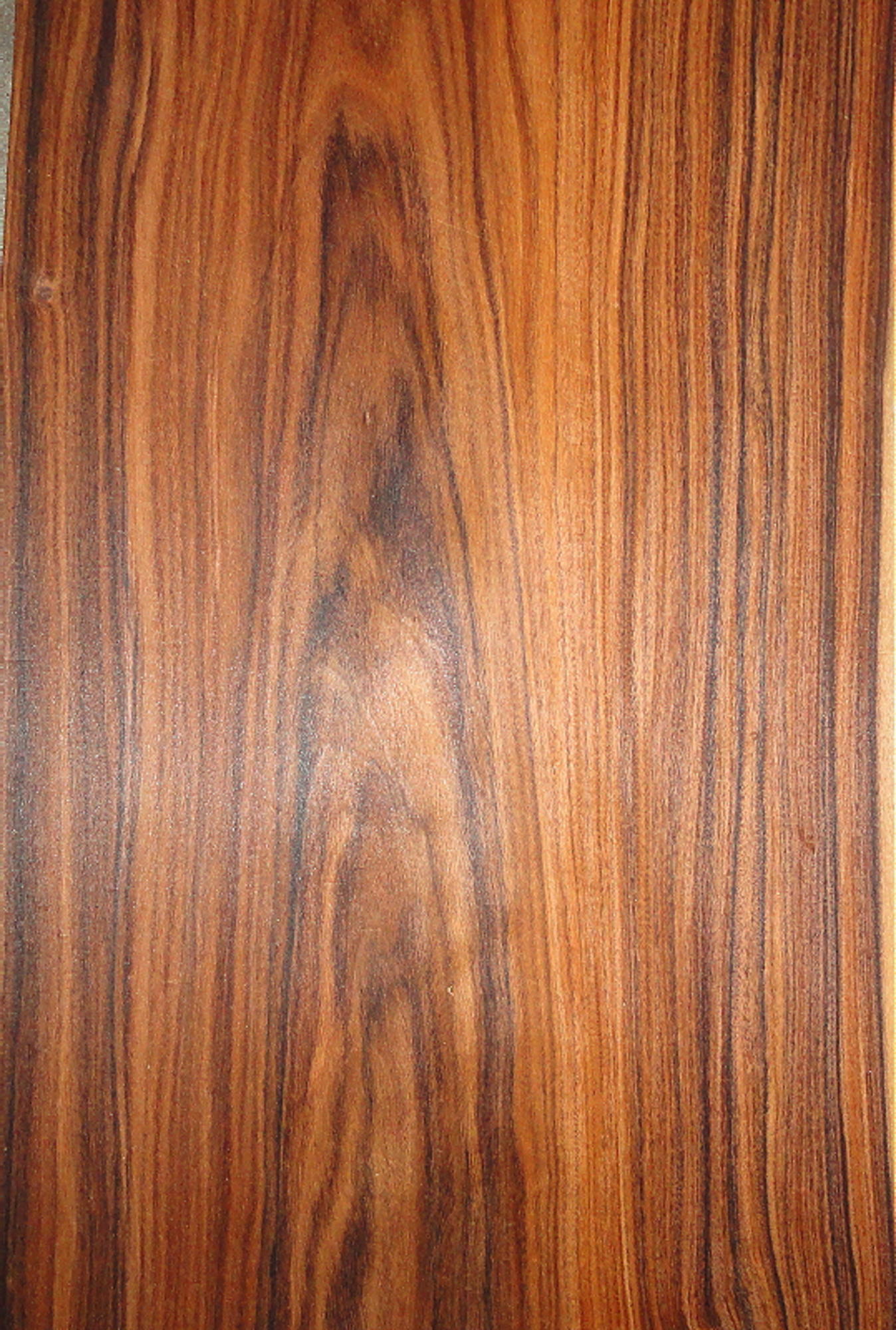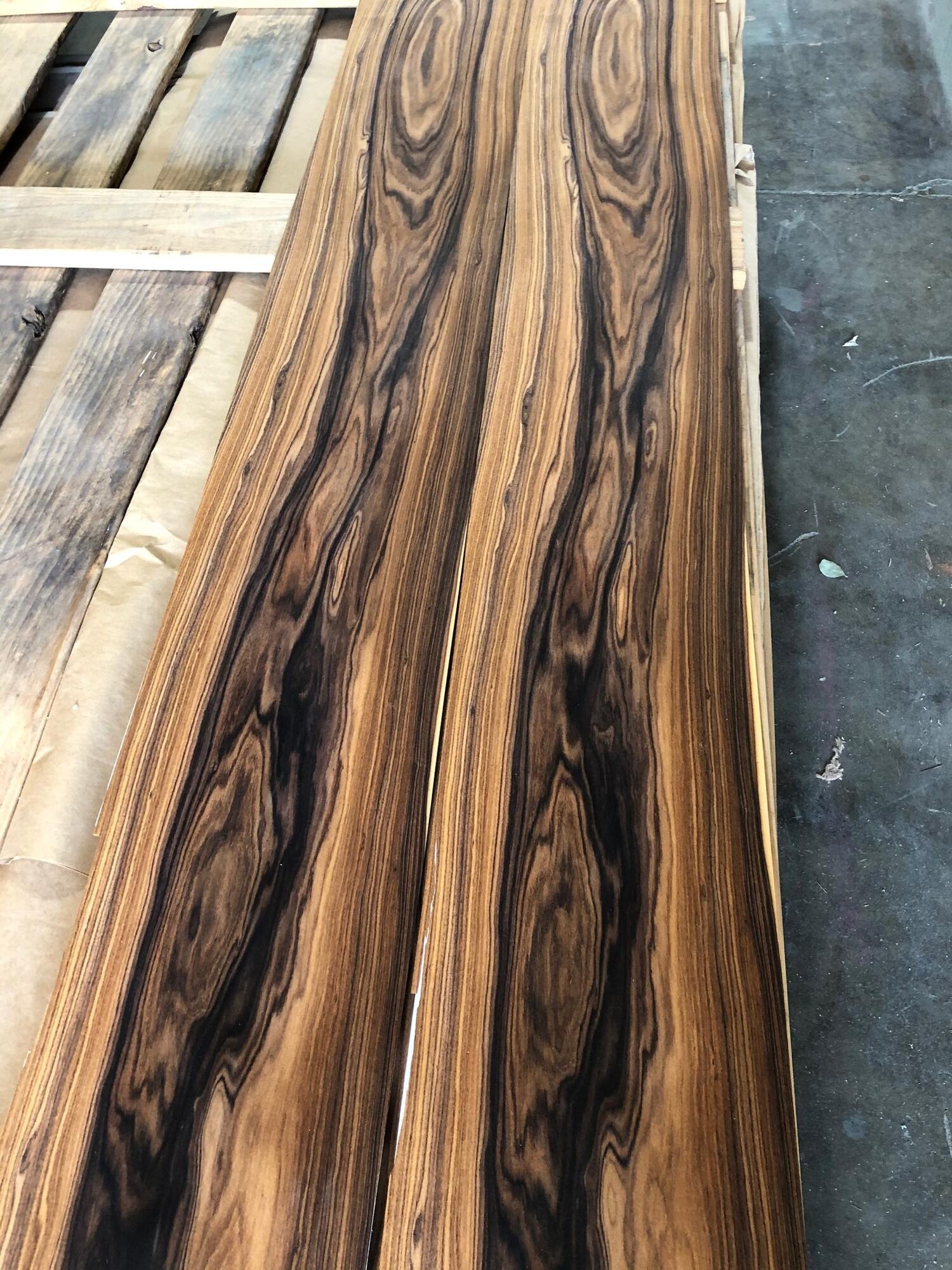Latin Name: Machaerium spp. (Machaerium scleroxylon)
Common Name(s): Pau Ferro, Morado, Bolivian Rosewood, Santos Rosewood
Sources: Tropical South America (mainly Brazil and Bolivia)
|
Characteristics
|
Color can be highly varied, ranging from reddish/orange to a dark violet/brown, usually with contrasting darker black streaks. Narrow sapwood is a pale yellow and is clearly demarcated from the heartwood.. |
|
Grain/ Texture
|
Grain is typically straight, though sometimes slightly irregular or interlocked depending on the species. Fine, even texture and a naturally high luster—though depending on the particular species, the wood can have a coarser, more fibrous texture. |
|
Workability
|
Santos Rosewood is considered overall to be of fair workability, as it can blunt the cutting edges of tools, and any irregular grain has a tendency to tearout during machining operations. Also, many of the same challenges in gluing rosewoods are common to Santos Rosewood as well. Pau Ferro turns and finishes well. |
|
Uses
|
Veneer, musical instruments, cabinetry, flooring, interior trim, turning, and other small specialty wood objects. |
|
Availability
|
Pau Ferro is in the medium price range for exotic imported hardwoods, and is likely to be much more affordable than some of the scarcer true rosewoods, (Dalbergia genus), of which this wood is often used as substitute. |


